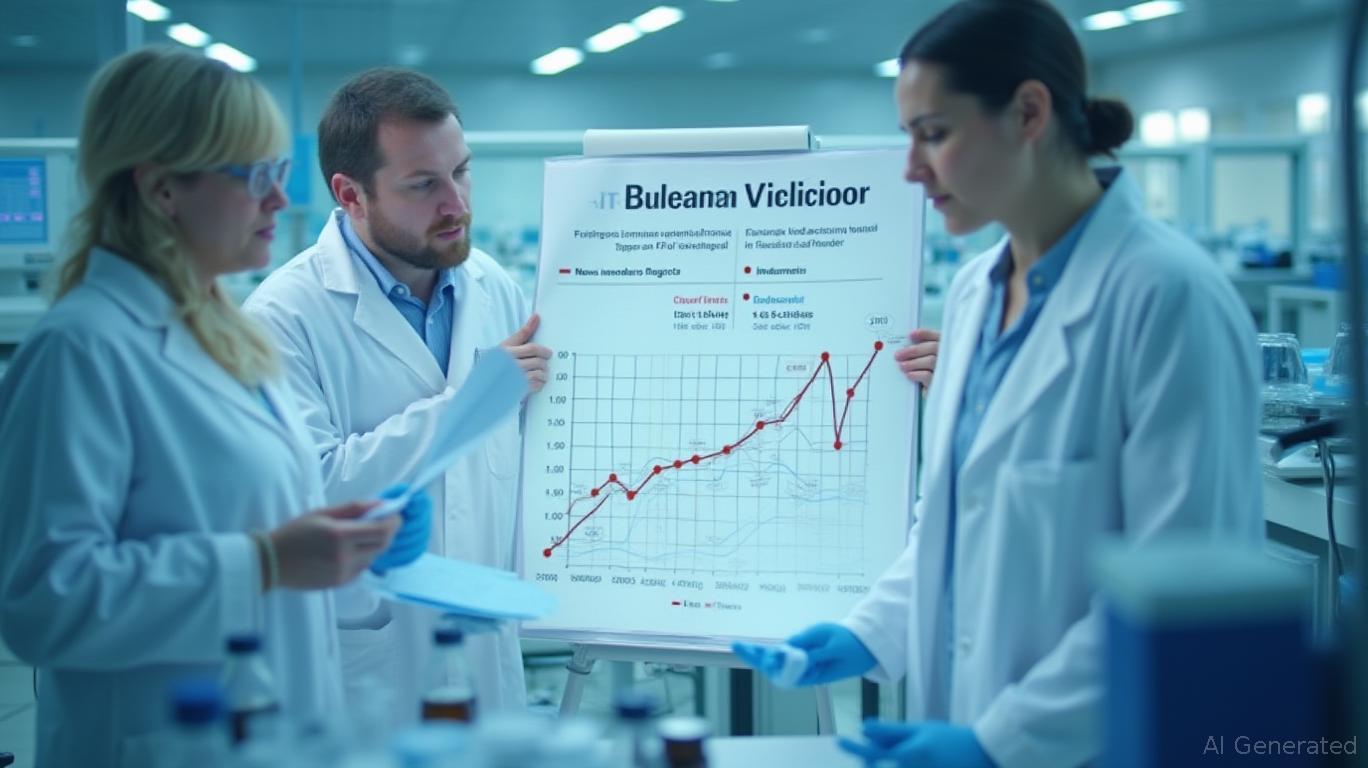Navigating the Storm: Biotech Opportunities in the HHS Regulatory Shift
The U.S. Department of Health and Human Services (HHS) reorganization of 2025 has upended the regulatory landscape for vaccine development and biotechnology, creating a volatile yet fertile environment for investors. While the downsizing of FDA staff, leadership upheavals, and budget cuts have introduced uncertainty, the shift toward chronic illness and environmental health priorities has also opened doors for nimble biotech firms. This article explores how regulatory changes are reshaping the sector and identifies undervalued companies poised to thrive in this new era.
The Regulatory Crossroads: Challenges and Opportunities
The HHS reorganization has slashed the FDA's workforce by 25%, eliminated specialized offices, and redirected funding toward chronic diseases like diabetes and heart disease. While this has slowed vaccine approvals—Novavax's JN.1-targeted booster, for instance, faced delays—the pivot toward predictable, risk-based regulatory pathways has created openings for firms with niche therapies or innovative delivery systems.
Accelerated Pathways in Focus:
- PRIME and AMTs: The FDA's Premarket Approval for Innovative Medical Devices (PRIME) and Advanced Manufacturing Technologies (AMTs) designations continue to fast-track therapies for unmet needs. Biotechs with robust pipelines in areas like mRNA-based cancer treatments or gene therapies for rare diseases stand to benefit.
- Global Harmonization: The EMA's Health Technology Assessment Regulation (HTAR) aligns regulatory and reimbursement processes, reducing time-to-market for therapies in regions like Europe.

Undervalued Biotechs to Watch
1. Arcturis Biopharma (ARCT):
Arcturis' self-amplifying mRNA (saRNA) platform enables rapid development of vaccines for emerging pathogens. While its stock has dipped due to FDA staffing cuts, its pipeline for universal flu vaccines and RSV therapeutics aligns with HHS's focus on environmental health (e.g., airborne pathogens). The company's partnership with the NIH for oncology mRNA therapies adds diversification.
2. Alector (ALEC):
Focusing on immuno-oncology and neurodegenerative diseases, Alector's LILRA-targeting therapies address unmet needs in Alzheimer's and Parkinson's. Its AL001 program, targeting chronic inflammation in the brain, fits squarely within HHS's shift toward chronic illness. Despite recent dips, its preclinical data suggests long-term potential.
3. Vir Biotechnology (VIR)::
Vir's partnership with GSK on broadly neutralizing antibodies for HIV and its RSV monoclonal antibody (Sotrovimab) offer stability in a volatile market. Its pivot to lung disease therapies aligns with the HHS's environmental health priorities (e.g., particulate matter-related illnesses).
4. Denali Therapeutics (DNLI):
Denali's gene therapy for Parkinson's disease and neurodegenerative disorders leverage its drug delivery platform to cross the blood-brain barrier. With Alzheimer's treatments commanding premium pricing, Denali's early-stage successes could attract buyout interest from Big Pharma.
Risks and Investment Considerations
While these firms show promise, investors must navigate several risks:
- FDA Delays: Smaller companies may struggle with inconsistent feedback from a reduced FDA workforce.
- Budget Cuts: NIH funding reductions threaten early-stage research, though therapies with commercial viability (e.g., obesity drugs) may still attract private investment.
- Regulatory Capture: Firms aligned with HHS's priorities—chronic diseases, environmental health—will outperform those focused on infectious diseases or traditional vaccines.
Conclusion: Positioning for the New Regulatory Landscape
The HHS reorganization has created a Darwinian environment for biotechs. Firms with diverse pipelines, FDA-friendly delivery systems, and chronic disease focus are best positioned to capitalize on accelerated pathways. Investors should prioritize companies with:
- Strong partnerships with institutions like the NIH or EMA.
- Late-stage therapies for chronic illnesses (e.g., obesity, heart disease).
- Technologies enabling rapid response to emerging threats (e.g., saRNA platforms).
Actionable Advice:
- Buy dips in ARCT on weak FDA news; its mRNA tech is underappreciated.
- Add DNLI to portfolios for long-term exposure to neurodegenerative therapies.
- Avoid pure-play vaccine developers (e.g., Novavax) until regulatory clarity emerges.
The biotech sector's volatility is here to stay, but the winners will be those who adapt to the HHS's new priorities—and investors bold enough to back them.

Comments
No comments yet